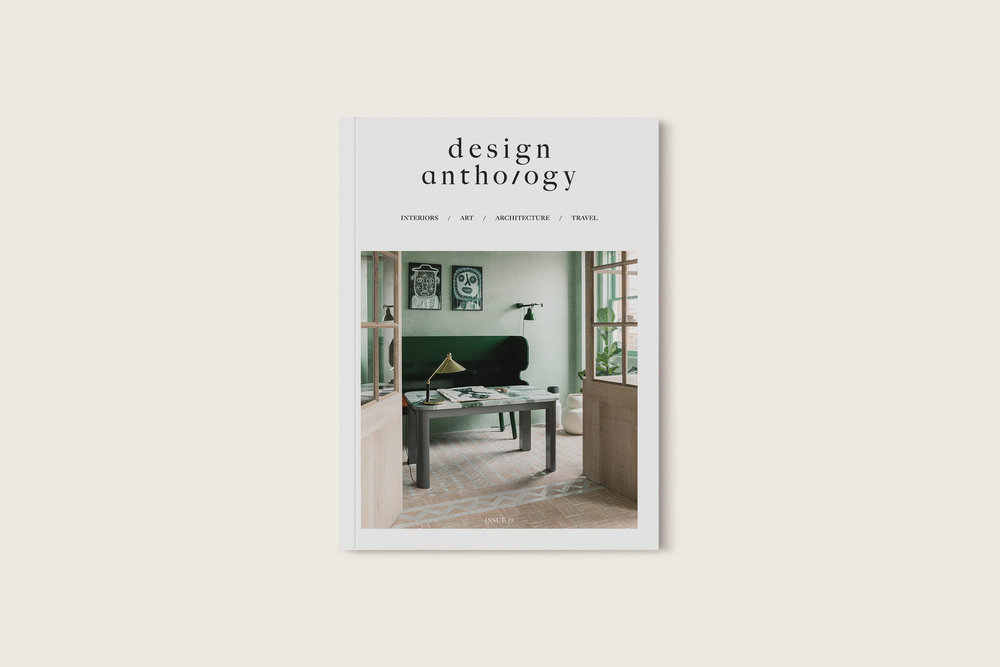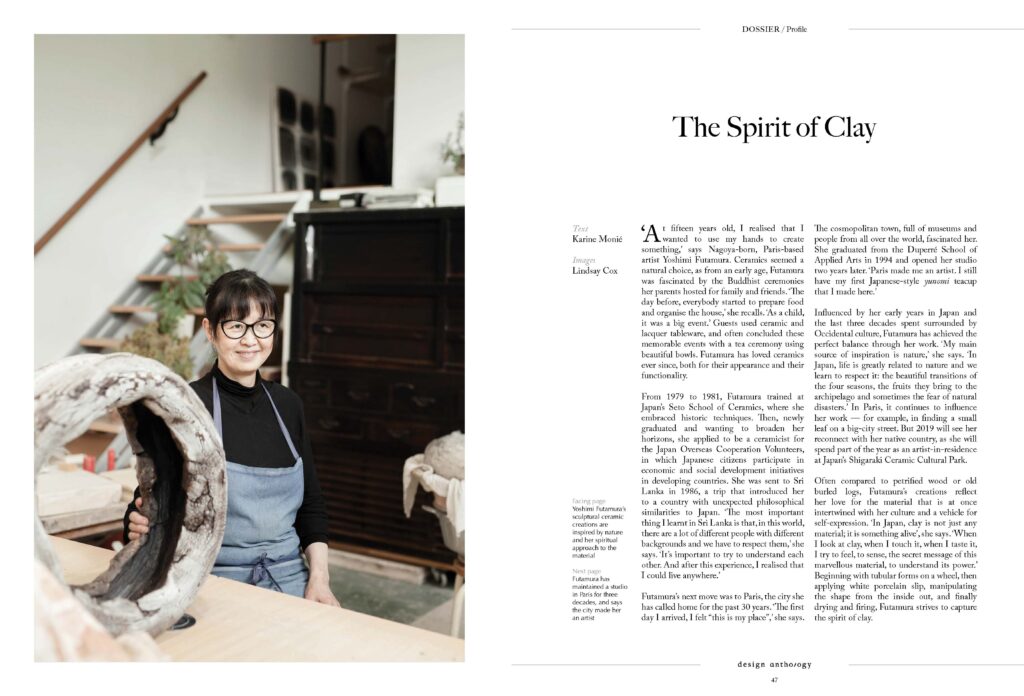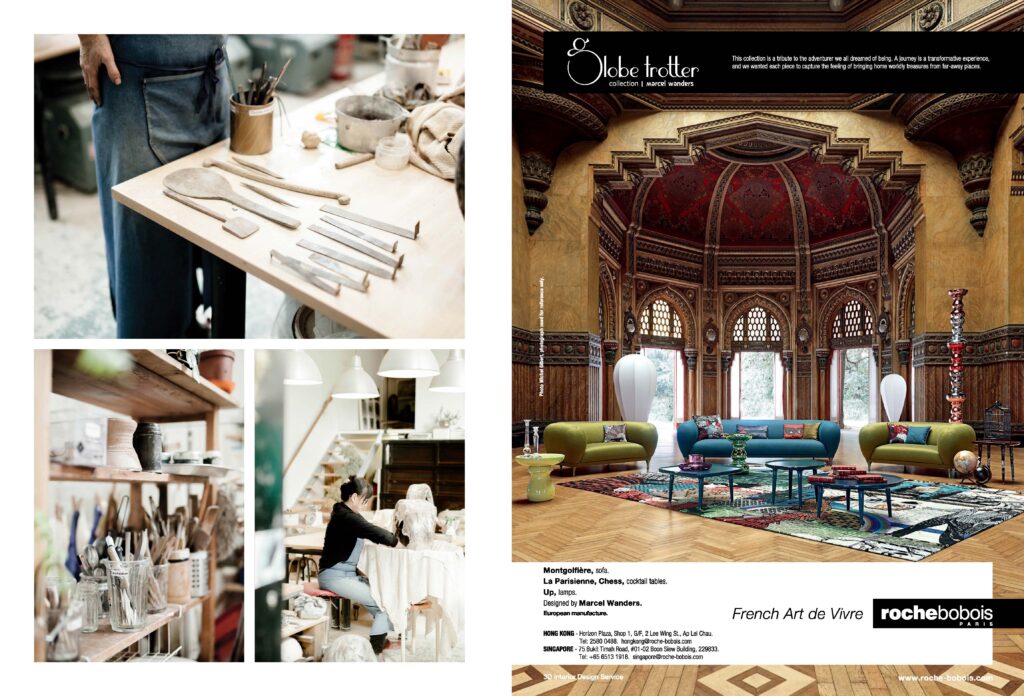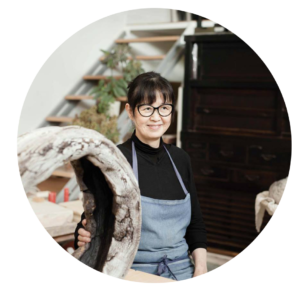Ceramicist Yoshimi Futamura talks about how traditional ceremonies
and her Japanese heritage inform her work



‘At fifteen years old, I realised that I wanted to use my hands to create something’, says Nagoya-born, Paris-based artist Yoshimi Futamura. Ceramics seemed a natural choice, as from an early age, Futamura was fascinated by the Buddhist ceremonies her parents hosted for family and friends. ‘The day before, everybody started to prepare food and organise the house,’ she recalls. ‘As a child, it was a big event.’ Guests used ceramic and lacquer tableware, and often concluded these memorable events with a tea ceremony using beautiful bowls. Futamura has loved ceramics ever since, both for their appearance and their functionality.
From 1979 to 1981, Futamura trained at Japan’s Seto School of Ceramics, where she embraced historic techniques. Then, newly graduated and wanting to broaden her horizons, she applied to be a ceramicist for the Japan Overseas Cooperation Volunteers, in which Japanese citizens participate in economic and social development initiatives in developing countries. She was sent to Sri Lanka in 1986, a trip that introduced her to a country with unexpected philosophical similarities to Japan. ‘The most important thing I learnt in Sri Lanka is that, in this world, there are a lot of diffferent people with different backgrounds and we have to respect them,’ she says. ‘It’s important to try to understand each other. And after this experience, I realised that I could live anywhere.’
Futamura’s next move was to Paris, the city she has called home for the past 30 years. ‘The first day I arrived, I felt “this is my place”,’ she says. The cosmopolitan town, full of museums and people from all over the world, fascinated her. She graduated from the Duperré School of Applied Arts in 1994 and opened her studio two years later. ‘Paris made me an artist. I still have my first Japanese-style yunomi teacup that I made here.’
Influenced by her early years in Japan and the last three decades spent surrounded by Occidental culture, Futamura has achieved the perfect balance through her work. ‘My main source of inspiration is nature,’ she says. ‘In Japan, life is greatly related to nature and we learn to respect it: the beautiful transitions of the four seasons, the fruits they bring to the archipelago and sometimes the fear of natural disasters.’ In Paris, it continues to influence her work- for exmaple, in finding a small leaf on a big-city street. But 2019 will see her reconnect with her native country, as she will spend part of the year as an artist-in-residence at Japan’s Shigaraki Ceramic Cultural Park.
Often compared to petrified wood or old burled logs, Futamura’s creations reflect her love for the material that is at once intertwined with her culture and a vehicle for self-expression. ‘In Japan, clay is not just any material; it is something alive’, she says. ‘When I look at clay, when I touch it, when I taste it, I try to feel, to sense, the secret message of this marvellous material, to understand its power.’ Beginning with tubular forms on a wheel, then applying white porcelain slip, manipulating the shape from the inside out, and finally drying and firing, Futamura strives to capture the spirit of clay.
